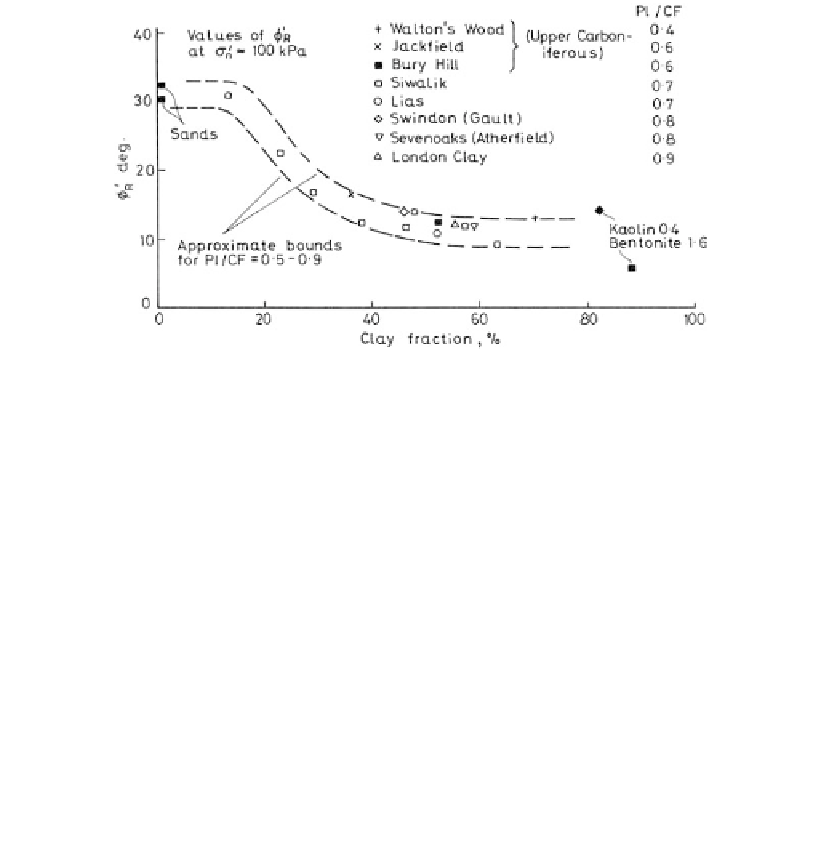Environmental Engineering Reference
In-Depth Information
thin plate structure, and weak interplate bonds and leads to the lowest residual strength
value with
R
as low as 5°. Kaolinite has a
R
of approximately 15° and illite approxi-
mately 10°.
Some clay minerals do not have a plate structure, e.g. halloysite has a tubular structure,
attapulgite a needlelike structure and some amorphous clay sized minerals such as gibbsite,
haematite, bauxite have essentially granular structures. This leads to much higher residual
friction angles, commonly greater than 25° (Skempton, 1985).
The pore water chemistry may have an influence on the residual shear strength. Di
Maio (1996a,b) showed that, with several clays from southern Italy and a commercial
bentonite, there is a change in
R
from about 14° when prepared with saturated NaCl
solution to about 6° when prepared with distilled water. Figure 6.6 shows this change
for the bentonite. From a practical point of view, few natural soils are likely to be as
affected as bentonite, but the residual strength parameters should be evaluated with pore
water with a chemistry close to the one existing
in situ
or anticipated during the life of
the dam.
Figure 6.5.
Field residual and ring shear tests on sands, kaolin and bentonite (Skempton, 1985).
Figure 6.6.
Residual friction angle of Ponza bentonite under normal stresses of 250-400 kPa for various
concentrations of NaCl solution (Leroueil, 2000; after Di Maio, 1996b).


